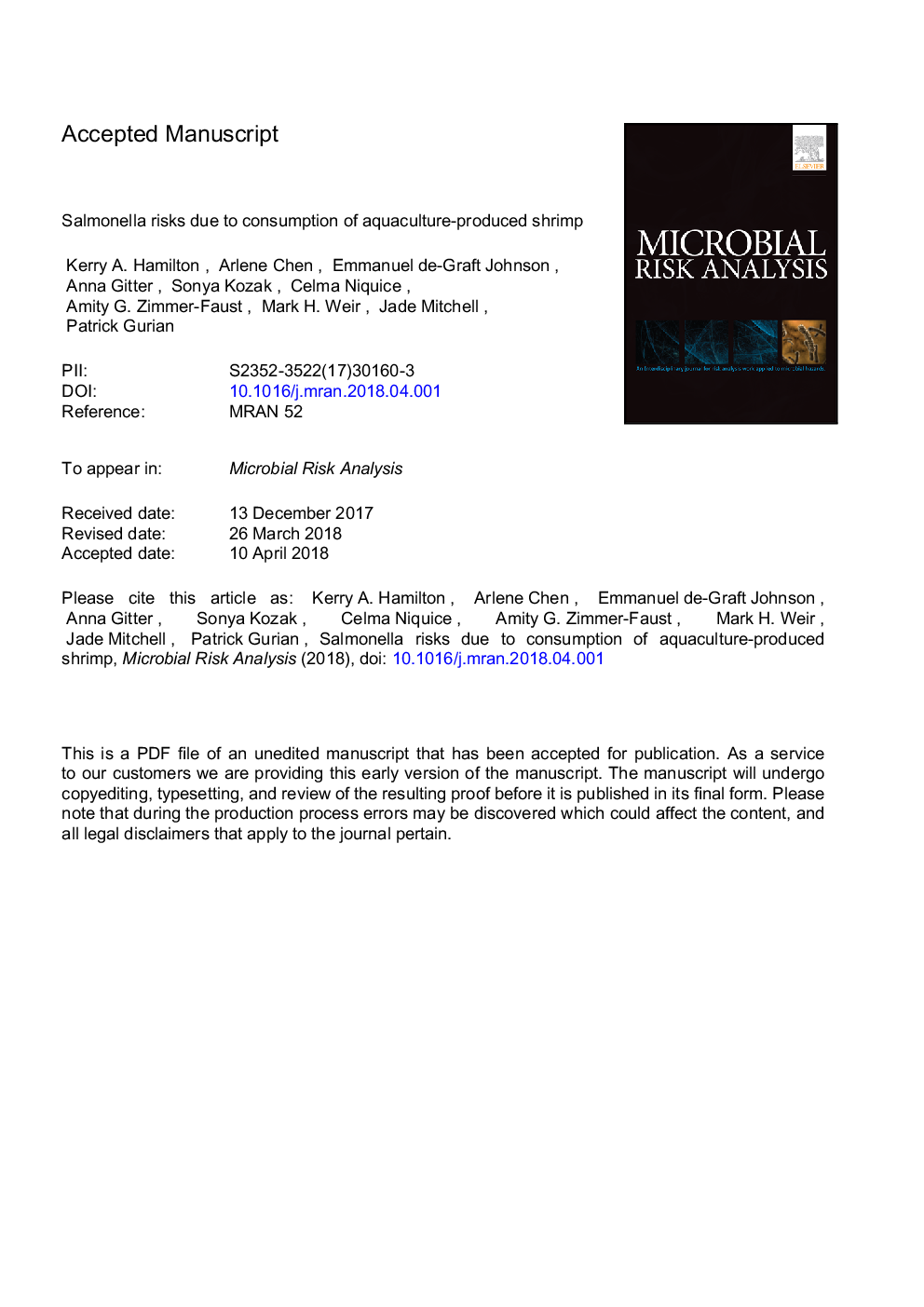| کد مقاله | کد نشریه | سال انتشار | مقاله انگلیسی | نسخه تمام متن |
|---|---|---|---|---|
| 8842821 | 1615859 | 2018 | 40 صفحه PDF | دانلود رایگان |
عنوان انگلیسی مقاله ISI
Salmonella risks due to consumption of aquaculture-produced shrimp
ترجمه فارسی عنوان
خطرات سالمونلا به دلیل مصرف میگو تولید می شود
دانلود مقاله + سفارش ترجمه
دانلود مقاله ISI انگلیسی
رایگان برای ایرانیان
کلمات کلیدی
موضوعات مرتبط
علوم زیستی و بیوفناوری
ایمنی شناسی و میکروب شناسی
میکروبیولوژی و بیوتکنولوژی کاربردی
چکیده انگلیسی
The use of aquaculture is increasing to meet the growing global demand for seafood. However, the use of aquaculture for seafood production incurs potential human health risks, especially from enteric bacteria such as Salmonella spp. Salmonella spp. was the most frequently reported cause of outbreaks associated with crustaceans from 1998 to 2004. Among crustacean species, shrimp are the most economically important, internationally traded seafood commodity, and the most commonly aquaculture-raised seafood imported to the United States. To inform safe aquaculture practices, a quantitative microbial risk assessment (QMRA) was performed, incorporating stochastic variability in pathogen growth, industrial shrimp processing, and consumer shrimp preparation. Several scenarios including gamma irradiation and cooking time were considered in order to examine the relative importance of these practices in terms of their impact on risk. Median annual infection risks for all scenarios considered were below 10â4 and median disability adjusted life year (DALY) metrics were below 10â6 DALY per person per year, however, 95th percentile risks were above 10â4 annual probability of infection and 10â6 DALY per person per year for scenarios with improper cooking and lack of gamma irradiation. The greatest difference between microbiological risks for the scenarios tested was observed when comparing proper vs. improper cooking (5-6 orders of magnitude) and gamma irradiation (4-5 orders of magnitude) compared to (up to less than 1 order of magnitude) for peeling and “deveining” (removing the shrimp digestive tract) vs. peeling only. The findings from this research suggest that restriction of Salmonella spp. to low levels (median 5-30 per L aquaculture pond water) may be necessary for scenarios in which proper downstream food handling and processing cannot be guaranteed.
ناشر
Database: Elsevier - ScienceDirect (ساینس دایرکت)
Journal: Microbial Risk Analysis - Volume 9, August 2018, Pages 22-32
Journal: Microbial Risk Analysis - Volume 9, August 2018, Pages 22-32
نویسندگان
Kerry A. Hamilton, Arlene Chen, Emmanuel de-Graft Johnson, Anna Gitter, Sonya Kozak, Celma Niquice, Amity G. Zimmer-Faust, Mark H. Weir, Jade Mitchell, Patrick L. Gurian,
